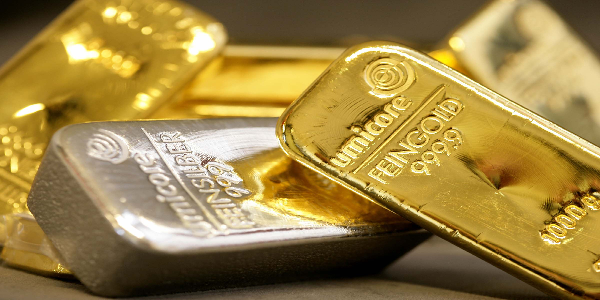
Kathmandu, April 8
Gold prices have been on a steady decline in recent days, both in the international market and in Nepal.
From a record high of Rs 180,300 per tola on Friday, gold dropped to Rs 173,800 today. Similarly, in the international market, gold, which had reached $3,165 per ounce on Thursday, fell to around $3,000 by Monday.
After hitting historic highs on Thursday internationally and Friday in Nepal, gold has started to fall. However, since there is no strong underlying reason for the drop, analysts believe this correction may be short-lived.
One key factor cited is the global stock market downturn over recent months. To offset losses, institutional investors have reportedly increased gold sales to convert profits into cash or cover losses in other assets. Given gold’s significant rise over the past year, many investors are now booking profits.
Another contributor is the exemption of precious metals, including gold, from additional tariffs imposed by former U.S. President Donald Trump. Initially, markets anticipated tariffs on gold, prompting a surge in buying. However, after precious metals were excluded, the trend shifted toward profit-taking.
“Gold sales increased after Trump’s reciprocal tariffs excluded precious metals,” said Kyanat Chenwala, Assistant Vice President and Head of Commodity Research at Kotak Securities.
Gold prices have seen robust growth over the past year, driven by concerns about inflation and economic slowdown. These same concerns are now encouraging investors to sell.
“There’s a lot of uncertainty and speculation in the gold market,” said Yeap Jun Rong, Market Strategist at IG Group, in an interview with CNBC. “In such a volatile environment, profit-taking or shifting to safer investments is natural and necessary.”
With global stock markets in decline, fears of a broader economic downturn are pushing investors toward liquidity. The possibility of a global recession—fueled by tariff battles between the U.S. and other countries—has further increased market anxiety.
Typically, economic uncertainty boosts gold demand, raising prices. However, with prices already at high levels, many investors are opting to lock in profits instead.
Some also speculate that gold is being used to offset stock market losses in major economies.
38% decline prediction called baseless
US-based Morningstar strategist John Mills recently suggested that gold prices, currently above $3,000 per ounce, could fall by as much as 38%—down to around $1,820 per ounce. If his prediction comes true, gold in Nepal could fall to around Rs 111,000 per tola.
His estimate made headlines internationally, including in Nepal, fueling speculation that gold could soon drop to Rs 100,000 per tola.
However, his prediction has drawn strong criticism. Analysts argue that Mills has overlooked ongoing trade tensions and their inflationary implications. While Mills talks of waning expectations for price hikes, indicators suggest otherwise.
Even Federal Reserve Chair Jerome Powell acknowledged the inflationary risks posed by additional tariffs, stating, “The additional tariffs are more significant than anticipated, and they have already raised inflationary risks.”
In light of rising inflation, the Fed is now less likely to continue cutting interest rates.
Rahu Kalantari, Vice President at Mehta Equities, said the key support levels for gold are between $2,978 and $3,000 per ounce. He noted that it’s not yet time to consider lower support levels.
Based on current technical analysis, a major drop in gold prices is unlikely. On Monday, gold was trading around $3,030 per ounce, stabilising at the $2,978 support level during the trading session.





















